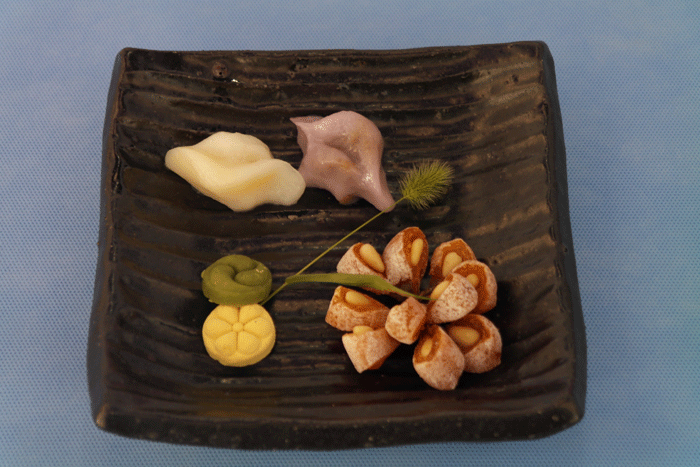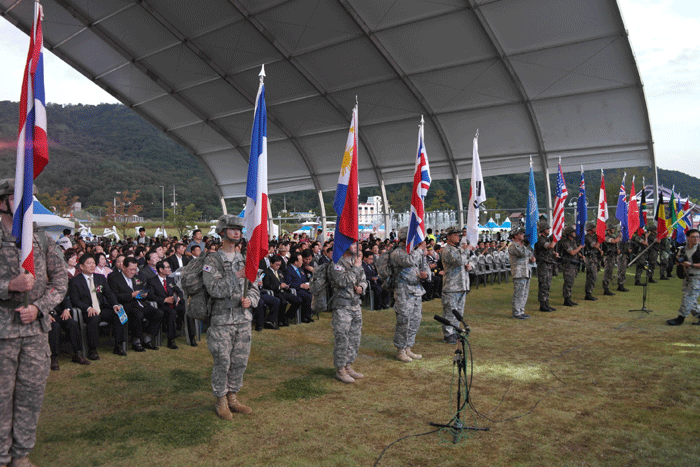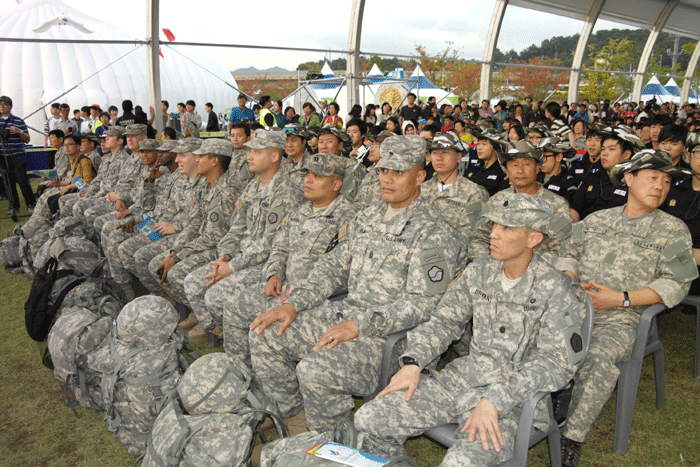With ROK Army 2nd OPC and USAG-Daegu
By Lee Kyung-sik*Publisher of The Korea
The Chilgok County of Geyongsangbuk-do Province hosted the 14th Nakdong River World Peace Culture Festival on Sept. 25, 2014 with the attendance of ambassadors and other members of the Diplomatic Corps as well as Governor Kim Kwang-yong of Gyeongsangbuk-do, Mayor Baek Sun-ki of Chilgok County, Gen. Lee Sun-jin of the Second Operations Command of the Republic of Korea (ROK) Army and various other ranking officials of the Central Government.
One of the highlights of the Festival was the re-enactment of the decisive Battle of Dabudong that was fought on Aug. 13-Sept. 24, 1950 and won by the ROK Army and the United Nations Forces formed by the armed forces of the United States and 15 other Korean War veteran countries, including the Republic of Ethiopia.
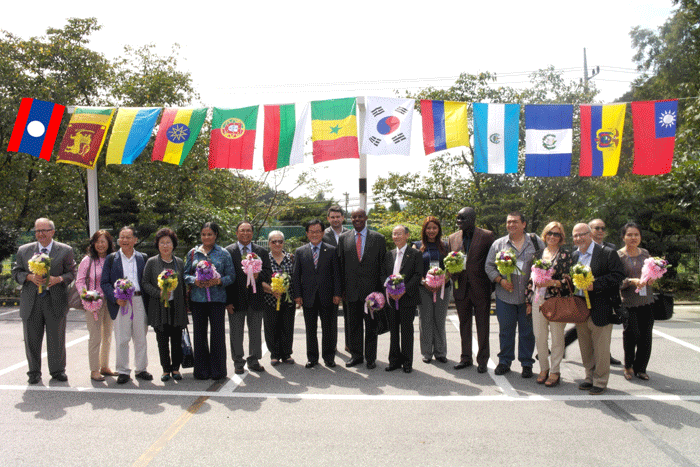
Some senior citizens of the Chilgok County at the Festival, who had actually witnessed the Battle of Dabudong in 1950, exclaimed, “Wow, it’s really like real. It was a truly bloody battle. Dead bodies of both sides floated on the surface of the water like wild ducks, and drifted downstream. I don’t even want to remember the ‘bad old days’ as they were so horrible and painful.”
It was the most significant battle throughout the Korean War (1950-3) because the ROK had lost more than 90% of its entire territory to the invading North Korean People’s Army (NKPA) with the sole exception of the Daegu City and the Busan Port City on the southeastern tip of the Korean peninsula. Had the Nakdong River Defense Line been broken through by the NKPA after the fall of Dabudong, many military experts agree, “there would exist no Republic of Korea today.”
The Battle of Dabudong was re-enacted by the soldiers of the Second Operations Command of the ROK Army and the United States Army Garrison in Daegu on the Nakdong River that cut through the town of Chilgok County.
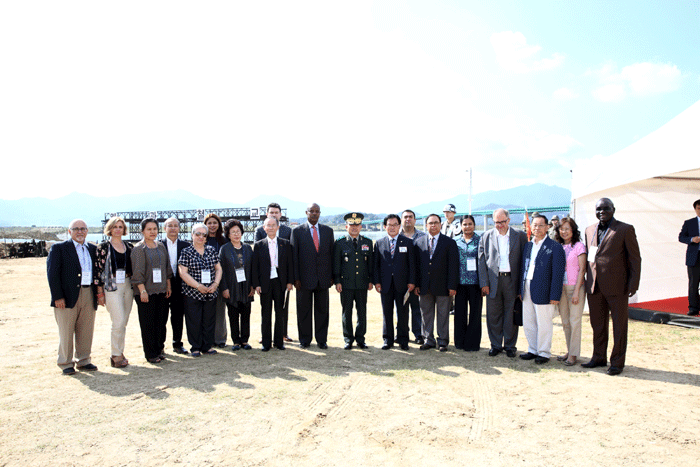
| ▲From left: Ambassador and Mrs. Antonio Quintero Nobre of Portugal, Mrs. Khantivong, DHM Somlith Khantivong of Laos, Mrs. Mrs. Montufar, Mrs. Castro Olivares, Mrs. Lee, Publisher-Chairman Lee Kyung-sik of The Korea Post, CDA Jason Manuel Castro Olivares of El Salvador, Ambassador Dibaba Abdetta of Ethiopia, Gen. Lee Sun-jin of the ROKA Second Operations Command, Mayor Baek Sun-ki, DHM Alejandro Montufar of Gutemala, Ambassador Tissa Wijeratne of Sri Lanka, Mrs. Wijeratne, Ambassador Petar Andonov of Bulgaria, Economic Counsellor Yen Kuo-ruey of Taiwan of Taipei Mission, Mrs. Yen and First Secretary Moussa Ndoye of Senegal. |
Communication trenches had been dug along the river on the southern bank of the River which was defended by the ROK and US Army soldiers and they waited for the far-outnumbering NKPA invasion troops to come.
Presently, the NKPA soldiers started their major offensive with large number of troops with the support of tanks and breached the beach head and a hand-to-hand fighting took place between the NKPA invaders and the ROK and friendly forces.
The ROK and UN forces were by far outnumbered by the NKPA forces that were carrying out a final general offensive to ‘wipe out’ the ROK and UN forces from the Daegu-Busan defense perimeters. It was the toughest battle for the ROK and friendly forces. The ROK and allied forces had been having a really difficult time when reinforcements finally arrived.

However, they were not regular soldiers but student volunteers formed with university and high school boys. Some 700 student volunteer soldiers fought at the risk of their lives, and finally succeeded in repelling the NKPA soldiers after a bloody hand-to-hand fighting where the enemy and friendly soldiers used fists and bayonets as well as rifles and revolvers.
After hours of bloody battle, the NKPA troops finally started retreating. The soldiers of the ROK, US and other allied forces, as well as the student volunteer soldiers, gave a victorious war cry. Korean soldiers cried out ‘Manse!’ (Hurray!) wildly--excitedly waving the flags of the ROK, US and other friendly countries.
Then began a pontoon bridge building and river-crossing operation started from the southern side of the river to the northern bank.
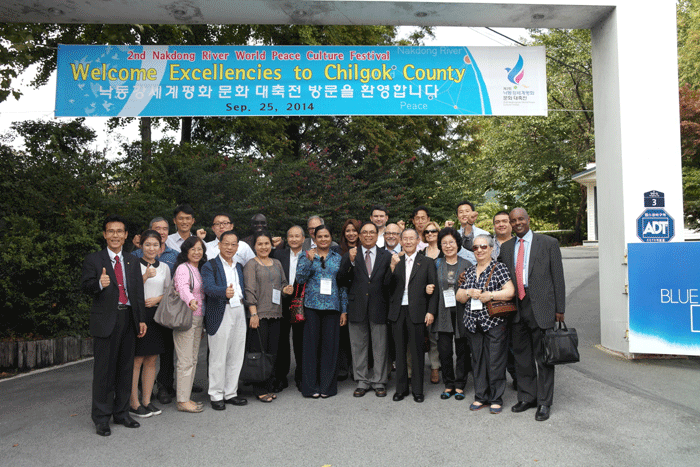
Heavy-duty helicopters brought down bridge sections on the surface of the river from air and amphibious tanks and other forms of watercraft started building a pontoon bridge across the river.
As smokescreen was created in places to hide the temporary bridge construction from the enemy and while the helicopters continued strafing the enemy positions on the other side of the river obviously performing the role that was actually carried out by fighter-bomber aircraft in the actual Battle of Dabudong.
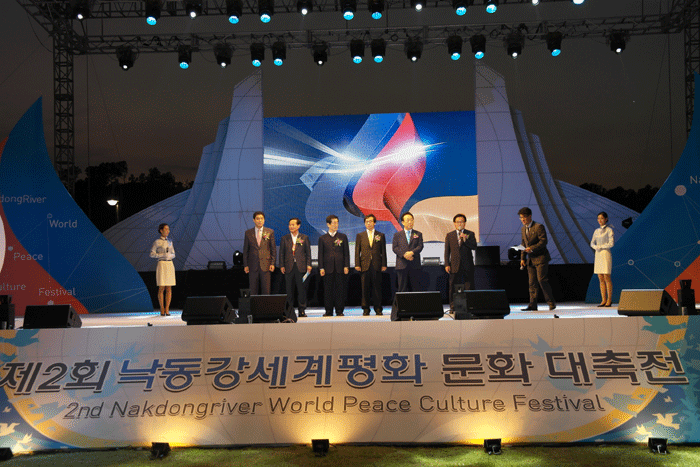
Finale of re-enactment of the Battle of Dabudong was made with a chorus of the popular military song of the 1950s named Jeonuya Jaljara (My comrades, sleep in peace!). The song consisted of four verses which bespoke how fierce the combats were. Here is an unofficial translation of the first verse of the song:
Crossing over the dead bodies of the comrades, we keep moving forward and forward,
Fare well, Nakdong River; we are moving forward and forward,
You have defeated the enemy over whom we had such a painful resentment, and died like a falling petal of flower,
Comrade, please reset in peace.

Earlier before the re-enactment of the Battle of Dabudong, the ambassadors and other senior members of the Diplomatic Corps, including Ambassadors Tissa Wijeratne of Sri Lanka, Dibaba Abdetta of Ethiopia, Antonio Quintero Nobre of Portugal and Petar Andonov of Bulgaria, visited the Museum and Monument of the Battle of Dabudong, where they saw various historical exhibits telling how terrible the Battle was and how difficult time the ROK and UN forces had at the time having to fight off the far outnumbering enemy forces.
Standing out from the various exhibits of the Museum was a tank-shaped monument was that built in memory of the Battle of Dabudong. Then there was a jet fighter plane of the ROK Air Force which the Korean people called Ssekssegi, an onomatopoetic name for the plane that gave such noise when it passed over them during the Korean War (1950-3).

Seoul, the capital city of the ROK, came under the occupation of the NKPA within three days of the general offensive carried out by the NKPA all along the 38th parallel (then border line between the ROK and NK) on the fateful day of June 25, 1950.
The Ssekssegi planes of the ROK and US Air Forces were a great source of relief when they saw them flying over them during the three-month rule of the ROK by the NKPA invaders from early June 28 to September 28, 1950.
The visiting ambassadors and other senior diplomats then were treated to an international buffet luncheon hosted by Mayor Baek Sun-ki together with the chairman of the Chilgok County Consul and other leaders of the County.

Welcoming the visiting members of the Diplomatic Corps, Mayor Baek said: “Looking back upon the Korean War, it is my firm belief that without the unreserved support of the countries of Your Excellencies, today there would exist no Republic of Korea. At this time, once again I would like to express my deepest appreciation to you all and hopes and belief that the Republic of Korea will make much contributions to the promotion of peace in the world.” (Further details of the speech are toward the end of this Article.)
In response to welcome speech by Mayor Baek, Ambassador Dr. Abdetta of Ethiopia made a congratulatory speech as the ambassador of one of the prominent Korean War Veteran countries of the Korean War.
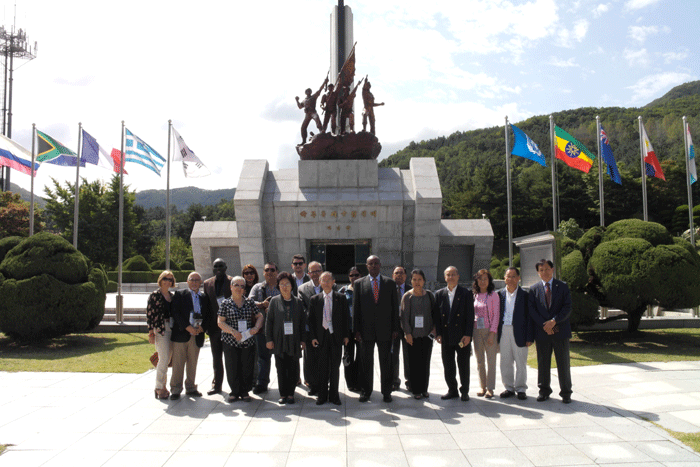
He said: “During the Korean War, Ethiopia dispatched 6037 soldiers as a member of UN forces. During the Korean War, the Ethiopian soldiers along other troops fought very decisively and boldly at all war front and registered big success for peace in the region and the world.”
Then he disclosed that “during the three years’ Korean War, the Ethiopian battalion never lost an inch of ground and no single soldier captured and taken as war prisoner by the enemy for which the Ethiopian soldiers were highly respected and received many awards.”
Following the luncheon, the visiting ambassadors and other senior diplomats were invited to traditional lotus-root tea and snacks that included pine nuts wrapped with dried persimmon pieces, Dasik cakes made with pine pollen and black sesame powder and Songpyeon rice cakes taken during the Chuseok Full Moon Festival holidays.
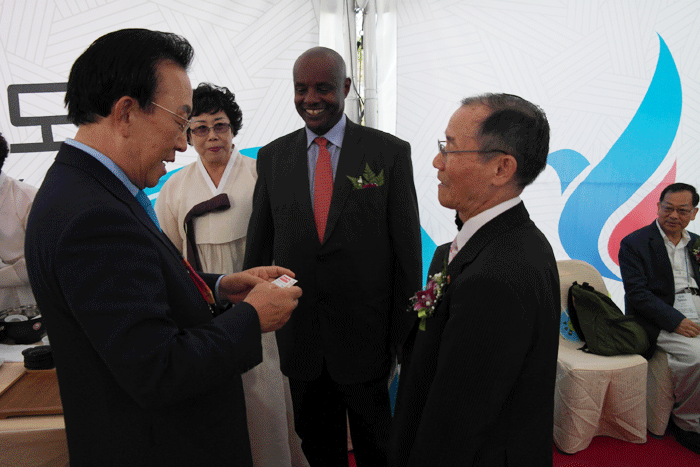
There each ambassador and diplomat were greeted by Governor Kim Kwan-yong of Gyeongsangbuk-do Province and and other leaders of the province and county.
Following the meeting with the governor and leaders of the province, the ambassadors and other senior diplomats were invited to see a short ‘drama’ where the senior offices of the ROK and NK sides confronted each other with a table between them. They were supposed to seek ways for peaceful co-existence between the two sides, but they ended up bitterly arguing with each other, which ultimately ended in a rupture. Publisher Lee Kyung-sik of The Korea Post gave a simultaneous interpretation, which left much to be desired.
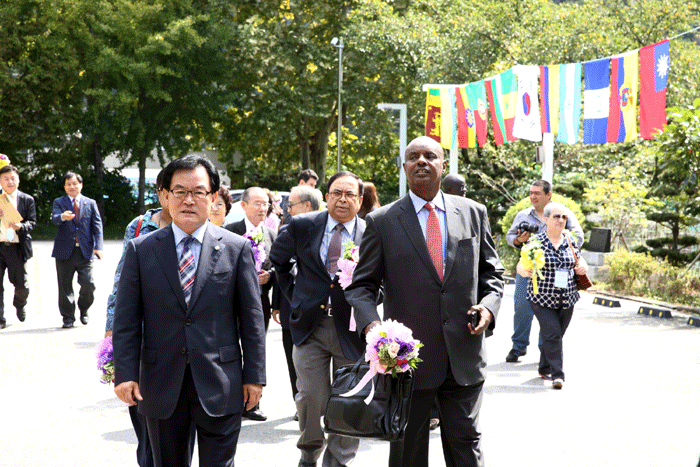
The confrontation between the ROK and NK military officers was an epitome of what has been going on between the ROK and NK for the past 69 years since the Liberation of the Korean peninsula from the colonial rule of Japan on Aug. 15, 1945.
There also was a Coin-throwing ceremony at the Pool of Coins where the ambassadors and other senior diplomats threw coins into the Pool of Coins together with the leaders of the local governments in a fund-raising campaign to build a school in Ethiopia. Ethiopia sent more than 6,000 troops to fight side by side with the ROK and UN Forces for the protection of freedom and democracy of the Republic of Korea. Several hundreds of the troops were killed in action while fighting against the invading North Korean Army. The Ethiopians troops were known for their bravery and there were no prisoner of war taken among the Ethiopian troops throughout the Korean War.
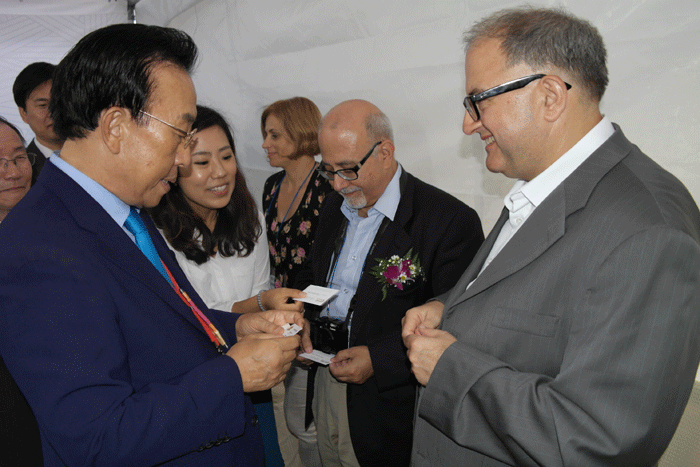
The visiting ambassadors and senior diplomats then attended the opening ceremony of the 14th Nakdong River World Peace Culture Festival attended by the leaders of the province and county and the commanders and service personnel of the Second Operations Command and the US Army Garrison Command in Daegu.
There were various performances in memory of the Battle of Dabudong showing various aspects of the Battle of Dabudong. It also featured the mother of a student who volunteered to join the ROK Army, fought bravely, and was killed in action after defeating many enemy soldiers in a hand-to-hand fighting with the invading NKPA soldiers.

Attending the opening ceremony in addition to the ambassadors were Charge d’Affaires and Mrs. Jason Manuel Castro Olivares of El Salvador; Deputy Heads of Mission Somlith Khantivong of Laos (minister counsellor), Alejandro Montufar Chazez of Guatemala (first secretary and consul) and Yen Kuo-ruey of the Republic of China (Taipei Mission); and First Secretary Moussa Ndoye of Senegal.
Excerpts from the welcome speech by Mayor Baek Sun-ki of Chilgok County:
I extend my warmest welcome to the Excellencies and Madams and other distinguished members of the Diplomatic Corps for their gracious visit to Chilgok, the City of National Safeguard and Peace. Together with 130,000 citizens of my County, I would like to express my profound gratitude to Your Excellencies and other distinguished guests for the trouble you have taken to come a long way to visit us.
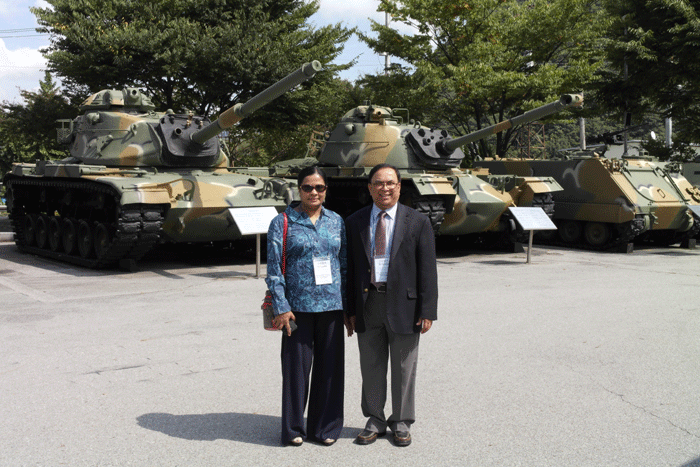
The 2nd Nakdong River World Peace Culture Festival takes place for four consecutive days beginning today and I am very happy that we have Your Excellencies and other distinguished guests here today who add grace and glory to our Festival.
Looking back upon the Korean War, it is my firm belief that without the unreserved support of the countries of Your Excellencies, today there would exist no Republic of Korea. At this time, once again I would like to express my deepest appreciation to you all and hopes and belief that the Republic of Korea will make much contributions to the promotion of peace in the world.

Today, it is only a one-day tour which is a rather short one for fully appreciating all aspects of the Festival and I only hope that Your Excellencies and other distinguished guests will see as much of the Festival as possible and grace us with your kind attendance at the Opening Ceremony of the Festival.
I hope that during this visit Your Excellencies and other distinguished guests will have a good time, make a lot of fond memories and widely introduce the good meaning of the Festival and details of our Country to Your Excellency’s country.

Once again, I would like to express my deepest appreciation to you all the eminent guests for visiting our County and my hope and wish that there will be everlasting peace for the world and mankind.
Excerpts from the congratulatory speech by Ambassador Dr. Abdetta of Ethiopia:
It is a great honour and privilege for me to be here today in this very special place in the history of Korean War and address those who are privileged to attend this significant occasion on peace for Korea and the world.

As far as I know, Chilgok County is the place where the most decisive battle broke out during the Korean War. In the battle in Chilgok County, Korean soldiers repelled the aggressors and succeeded to defend the Nakdong River Defense Line. Since then, Chilgok County has been a symbol of the establishment of peace.
May I express our thanks and appreciation to the Mayor of Chilgok County for inviting us to the 2nd Nakdong River World Peace Culture Festival. It is also the sign of respect and recognition for Ethiopia to have an opportunity to share the memory of the historical battle during the Korean War and to promote peace in Korean peninsula and the world peace at large.
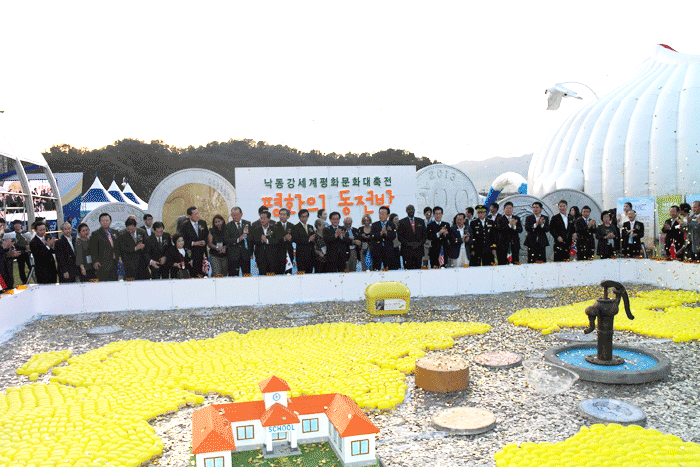
May I also take this opportunity to thank the people and government of Chilgok County for recognizing the sacrifice made by soldiers of Korean War participating nations under the umbrella of United Nations.
During the Korean War, Ethiopia dispatched 6037 soldiers as a member of UN forces. During the Korean War, the Ethiopian soldiers along other troops fought very decisively and boldly at all war front and registered big success for peace in the region and the world.
During the three years’ Korean War, the Ethiopian battalion never lost an inch of ground and no single soldier captured and taken as war prisoner by the enemy for which the Ethiopian soldiers were highly respected and received many awards.
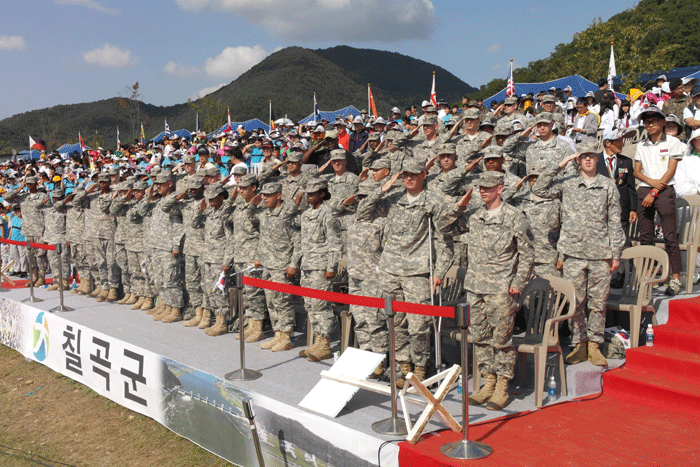
▲Officers and service members of the United States Army Garrison-Daegu salute to the Taegeukgi and the Stars and Stripes at the opening of the re-enactment of the Battle of Dabudong. |
Thanks to the determination of Korean people and the sacrifices made by Korean War Veterans, today, Korea is an advanced country, known for its advanced technology, visible example of successful development experience, a democratic and a donor country.
Since the end of Korean War, the relations between Ethiopia and the Republic of Korea which has been cemented by blood and the relations between the peoples and governments of the two countries have made marked progress. Both countries have committed themselves to further strengthen their historic relations and work together for mutual benefits in the future.
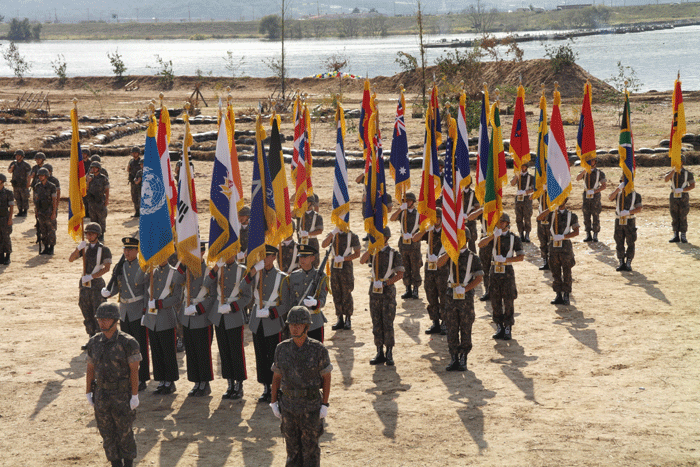
Once again, I am deeply honoured to be part of this World Peace Culture Festival today and to be able to help promote the world peace. I would also like to take this opportunity to extend my appreciation to Mayor and people of Chilgok County and Chairman of the Korea Post and his team for the excellent preparation of today’s festival which is meant for the peace and security to prevail in the world.
Finally, on behalf of the Ethiopian people, government and our Embassy in Seoul, I wish the government and the people of Chilgok County every success!
Summary of the Battle of Dabudong:
The Battle of Dabudong was between the 24,000 troops of the NKPA and the 10,000 combined troops of the ROK and US Army.

The enemy had three reinforced divisions with 34 T-34 tanks and 670 artillery pieces of varying calibers.
In contrast, the ROKA 1st Division had only 7,600 troops who even included over 500 just-recruited and quickly trained student volunteers. The ROK 1st Division then had only 172 artillery pieces vis-?-vis 670 artillery guns of the enemy.
At the pre-dawn hour of 4 a.m. on Sunday June 25, 1950, the NKPA started an unwarned all-out invasion of the ROK in the South along the entire stretch of the border line of the 38th parallel dealing a massive artillery fire on the ROK defense positions.
At the same time the YAK fighter aircraft of the North Korean Air Force invaded the Seoul airspace and bombed the Gimpo Airport on the outskirts of Seoul and dealt strafing attacks on the streets in the heart of Seoul.

The ROK was completely taken by surprise. There had been an extensive and intensive peace offensive by the North Korean regime toward the ROK in the South with the result that the military security precautions in the ROK were lifted on the mid-night of June 23, two days before the date of the North Korean invasion, and more than one third of the total personnel strength of the ROK Armed Forces were given a weekend leave. In other words, North Korea started its military invasion against the ROK when one third of the entire ROK Armed Forces personnel were off duty on that fateful Sunday.
North Korea started the invasion with a total of seven well-armed infantry divisions, one motorized division and several independent brigades totaling in strength over 111,000 persons, 1,610 artillery guns and over 280 tanks plus many self-propelled guns.

The ROK Armed Forces were miserably outnumbered by the invading North Korean forces. The ROK had no tanks nor any fighter aircraft (except 22 trainers). The ROK Armed Forces had only 27 small armored vehicles and small-caliber artillery guns.
Little wonder, Seoul, its capital city, fell within three days after North Korea started invasion.
The North Korean Armed Forces thenceforth moved deep into South Korea almost unchallenged, and occupied most of the land space with the sole exception of the perimeters of the Daegu and Busan in the southeastern corner of the Korean peninsula.
Then came the fateful Battle of Dabudong near Daegu (now one of the principal metropolitan cities), which was so important and critical that it could decide on the fate of the Republic of Korea.
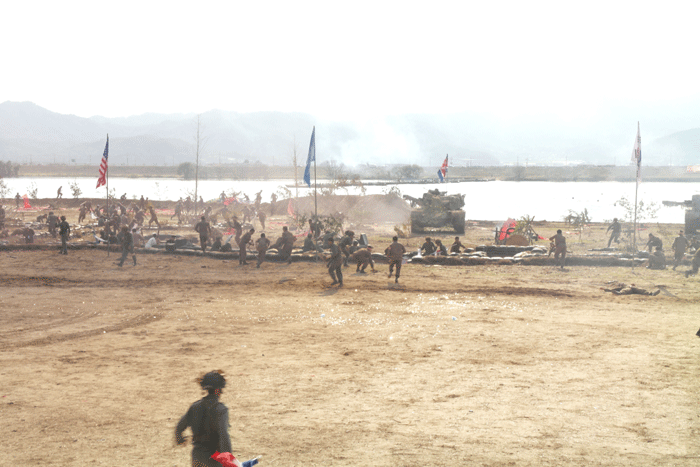
Marshal Kim Il-sung of the North Korean regime, who also was the supreme commander of the NKPA, personally visited the frontline troops of the NKPA who were deployed to attack Dabudong to encourage his troops to “crush the ROK and UN Armed Forces and bury them under the sea off the Busan Port.”
The ROK Army 1st Division fought against three infantry divisions of the NKPA in the Dabudong region to protect the Daegu City from an all-out offensive carried out by the outnumbering three NKPA divisions trying to capture Daegu.
The ROK Army and the enemy had extremely fierce fighting against each other in the Yuhak-san Combat, Hill 328 Combat, Hill 837 Combat, Hill 674 Combat, the ‘Bowling Alley’ Combat and the Gasan Mountain Fortress Combat.

It was the fiercest battle of the Korean War in which the Yuhak-san Mountain positions changed their owners nine times and Hill 328 as many as 15 times.
Brig. Gen. Paik, commanding general of the ROKA 1st Infantry Division, badly needed reinforcements to defend the Dabudong Line and asked 8th US Army Commander Lt. Gen. Walton H. Walker for reinforcements. Lt. Gen. Walker promptly heeded his request and sent the 23rd Regiment commanded by Col. John H. Michaelis. Paik also got one regiment from the ROK Army Headquarters. With these reinforcements, the ROKA 1st Division successfully staved off the August and September offensives of the NKPA by crushing the enemy invaders.
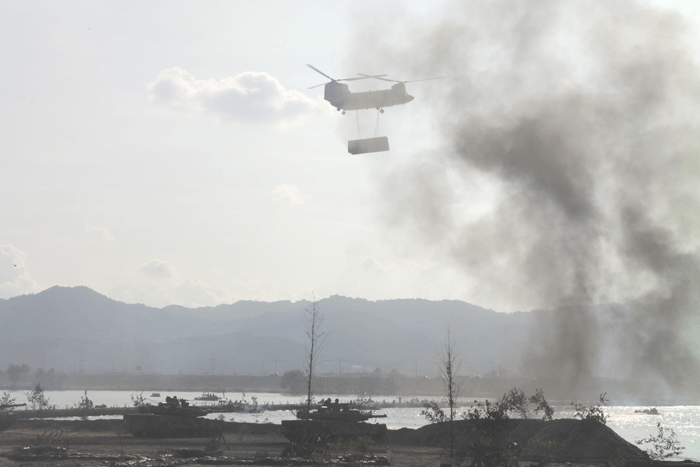
During the 55-day Battle of Dabudong, the NKPA suffered casualties of 24,000 dead, wounded or missing, while the ROK and US defenders lost over 10,000 killed, wounded or missing.
The three invading NKPA divisions were badly mauled sustaining a fatal defeat. The Battle of Dabudong is recorded as one of the greatest battles of the Korean War.
----------
*The author was the former Cultural Editor of Korea’s leading English daily, The Korea Herald, and 1973 winner of the Korean Literature Translation Awarded co-hosted by independent Korean-language daily Hankuk Ilbo and another leading English-language daily, The Korea Times.



